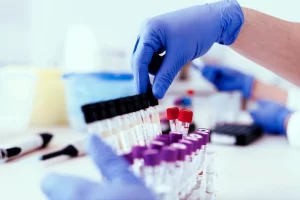Ensuring workplace safety is a top priority for all employers, and one way to achieve this is through drug testing. A 12 panel drug test is a popular choice for employers as it can detect a wide range of drugs. According to the Occupational Safety and Health Administration (OSHA), drug and alcohol abuse in the workplace contributes to 65% of workplace accidents and 38% of employee absenteeism. Furthermore, drug abuse costs employers an estimated $81 billion yearly in lost productivity and healthcare expenses. In this article, we will discuss the importance of workplace safety, the benefits of 12 panel drug tests, and how to implement a drug testing program effectively.
The Importance of Workplace Safety
Workplace safety is essential for both employers and employees. Employers have a legal and ethical responsibility to provide a safe working environment, and employees have the right to work in a safe and healthy environment. Workplace injuries and illnesses harm employees and can lead to financial losses for employers. Ensuring workplace safety protects employees’ physical and mental health and contributes to positive work culture and higher productivity.
The Benefits of 12 Panel Drug Tests
It is a urine-based drug test that can detect the presence of twelve different drugs. These drugs include amphetamines, barbiturates, benzodiazepines, cocaine, marijuana, methadone, methamphetamine, opiates, oxycodone, phencyclidine, propoxyphene, and tricyclic antidepressants. Employers can identify potential substance abuse issues by testing for various drugs before they become a problem. Implementing a 12 panel drug testing program can also:
- Improve workplace safety by identifying employees who may be under the influence of drugs while on the job.
- Deter employees from using drugs in the workplace.
- Increase productivity by reducing absenteeism, accidents, and injuries.
- Lower healthcare costs by identifying and treating substance abuse issues early on.
How to Effectively Implement a Testing Program
Implementing a drug examination program requires careful planning and consideration. Here are some steps to follow to implement a testing program effectively:
Step 1: Develop a Drug Testing Policy
The first step in implementing a program is to develop a drug test policy. The policy should clearly state the purpose of the program, which employees will be tested, when and how testing will be conducted, and the consequences of a positive test result.
Step 2: Train Supervisors and Employees
Supervisors and employees should be trained on the drug testing policy and procedures. They should understand why testing is necessary, what drugs are being tested for, and the consequences of a positive test result.
Step 3: Choose a Reliable Testing Provider
Choose a reliable testing provider that offers drug tests. The provider should have experience in testing and follow industry best practices.
Step 4: Conduct Testing
Testing should be conducted in accordance with the drug testing policy. Employees should be provided with instructions on providing a urine sample, which should be collected in a secure and private location. The sample should then be sent to a certified laboratory for testing.
Step 5: Handle Positive Results
The employer should follow the policy and procedures if an employee tests positive for drugs. The employee should be allowed to explain the positive test result and may be required to undergo additional testing or counseling.
Conclusion
In conclusion, workplace safety is a top priority for employers, and implementing a drug testing program with 12 panel drug tests can help ensure a safe and healthy work environment. By following the steps outlined in this article, employers can effectively implement a drug testing program and reap the benefits of a drug-free workplace. Halux Diagnostic is a trusted provider in the industry for reliable testing kits and other onsite diagnostic products.
You Might Also Like:




